Parts of a circle
Categories: gcse geometry circle geometry

A circle is a curved shape. Every point on a circle is the same distance from the centre of the circle:
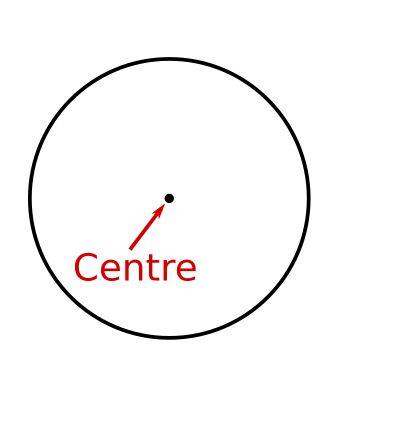
In this article, we will look at the parts of a circle. To learn about the areas and perimeters of circles, arcs, segments and sectors are explained in the article Area and circumference of circles.
Here is a video:
Radius of a circle
A radius of a circle is a line from the centre to any point on the edge of the circle. Since every point on the circle is an equal distance from the centre, you can draw a line from the centre in any direction and it will always form a radius.

The plural of radius is radii.
Diameter of a circle
The diameter of a circle is any line drawn between two points on the circle that passes through the centre of the circle:
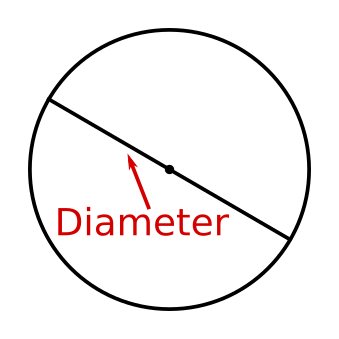
The diameter is formed by 2 radii, so the length of the diameter is twice the length of the radius.
Circumference of a circle
The circumference of a circle is the length around the edge of the circle:
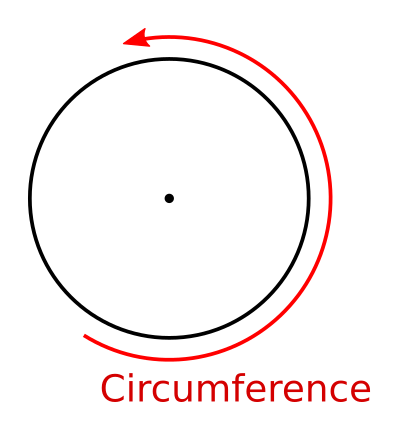
How to find the circumference of a circle
The circumference of a circle with a radius r is given by this formula:
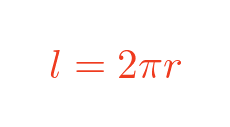
Where l is the circumference, r is the radius, and pi is a constant, equal to approximately 3.141592654.
The circumference of a circle with diameter d is given by this formula:
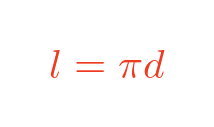
Where d is the diameter of the circle. This equation is true because the diameter is twice the radius.
How to find the area of a circle
The area of a circle is given by the area formula of a circle:
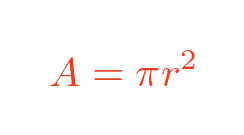
Secant to a circle
A secant is a straight line that cuts through a circle:
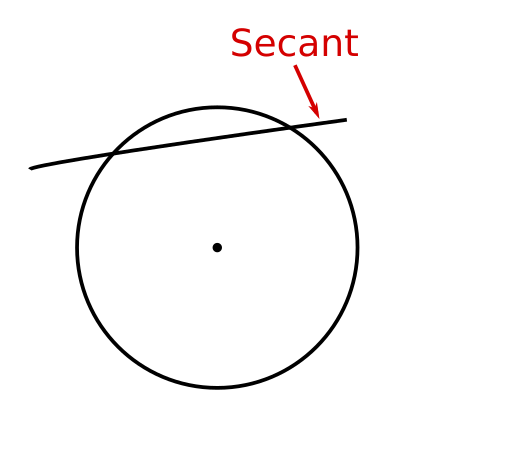
Chord of a circle
A chord is a straight line between two points on the edge of the circle:
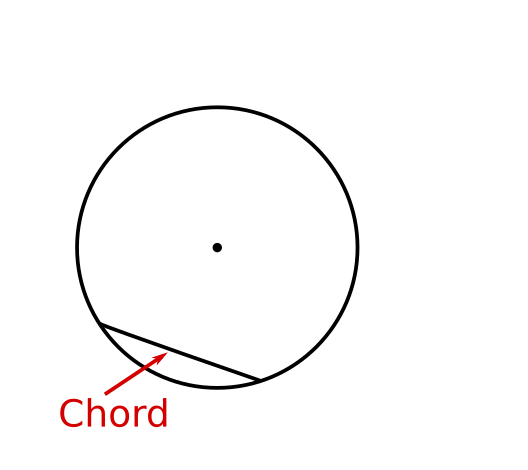
A chord is similar to a secant, except that the chord does not extend beyond the edge of the circle.
A diameter is a special chord that also passes through the centre of the circle.
Tangent to a circle
A tangent is a straight line that just touches the circle:
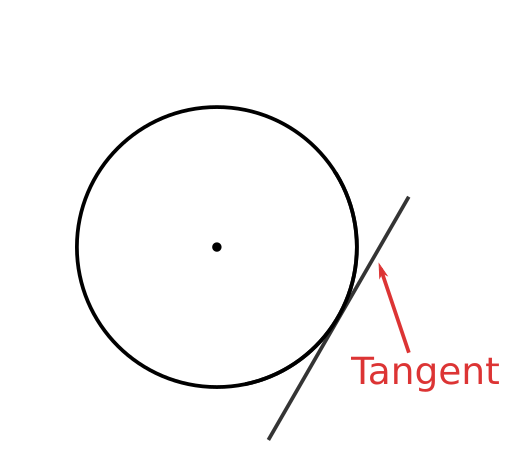
Segments, sectors and arcs of a circle
This diagram shows a segment, a sector, and an arc of a circle:

A sector is a "pie slice" of the circle. The angle a defines how big the pie slice is.
A segment is a part of the circle that is cut off by a chord. The angle a is the angle of the equivalent sector. We say that the segment subtends an angle a at the centre of the circle. This angle is sometimes called the central angle.
An arc is part of the circumference of the circle. Again, an arc subtends an angle a at the centre of the circle.
The areas and perimeters of arcs, segments and sectors are covered here.
See also
- Perpendicular bisector of chord theorem
- Angle at the centre of a circle is twice the angle at the circumference
- Angle in a semicircle is 90°
- Angles in the same segment of a circle are equal
- Opposite angles in a cyclic quadrilateral add up to 180°
- Tangent and radius of a circle meet at 90°
- Two tangents from a point have equal length
- Alternate segment theorem
- Two radii form an isosceles triangle

Join the GraphicMaths Newletter
Sign up using this form to receive an email when new content is added:
Popular tags
adder adjacency matrix alu and gate angle answers area argand diagram binary maths cartesian equation chain rule chord circle cofactor combinations complex modulus complex polygon complex power complex root cosh cosine cosine rule countable cpu cube decagon demorgans law derivative determinant diagonal directrix dodecagon eigenvalue eigenvector ellipse equilateral triangle euler eulers formula exercises exponent exponential exterior angle first principles flip-flop focus gabriels horn gradient graph hendecagon heptagon hexagon horizontal hyperbola hyperbolic function hyperbolic functions infinity integration by parts integration by substitution interior angle inverse hyperbolic function inverse matrix irrational irregular polygon isosceles trapezium isosceles triangle kite koch curve l system line integral locus maclaurin series major axis matrix matrix algebra mean minor axis n choose r nand gate newton raphson method nonagon nor gate normal normal distribution not gate octagon or gate parabola parallelogram parametric equation pentagon perimeter permutations polar coordinates polynomial power probability probability distribution product rule proof pythagoras proof quadrilateral questions radians radius rectangle regular polygon rhombus root sech segment set set-reset flip-flop sine sine rule sinh sloping lines solving equations solving triangles square square root standard curves standard deviation star polygon statistics straight line graphs surface of revolution symmetry tangent tanh transformation transformations trapezium triangle turtle graphics uncountable variance vertical volume volume of revolution xnor gate xor gate